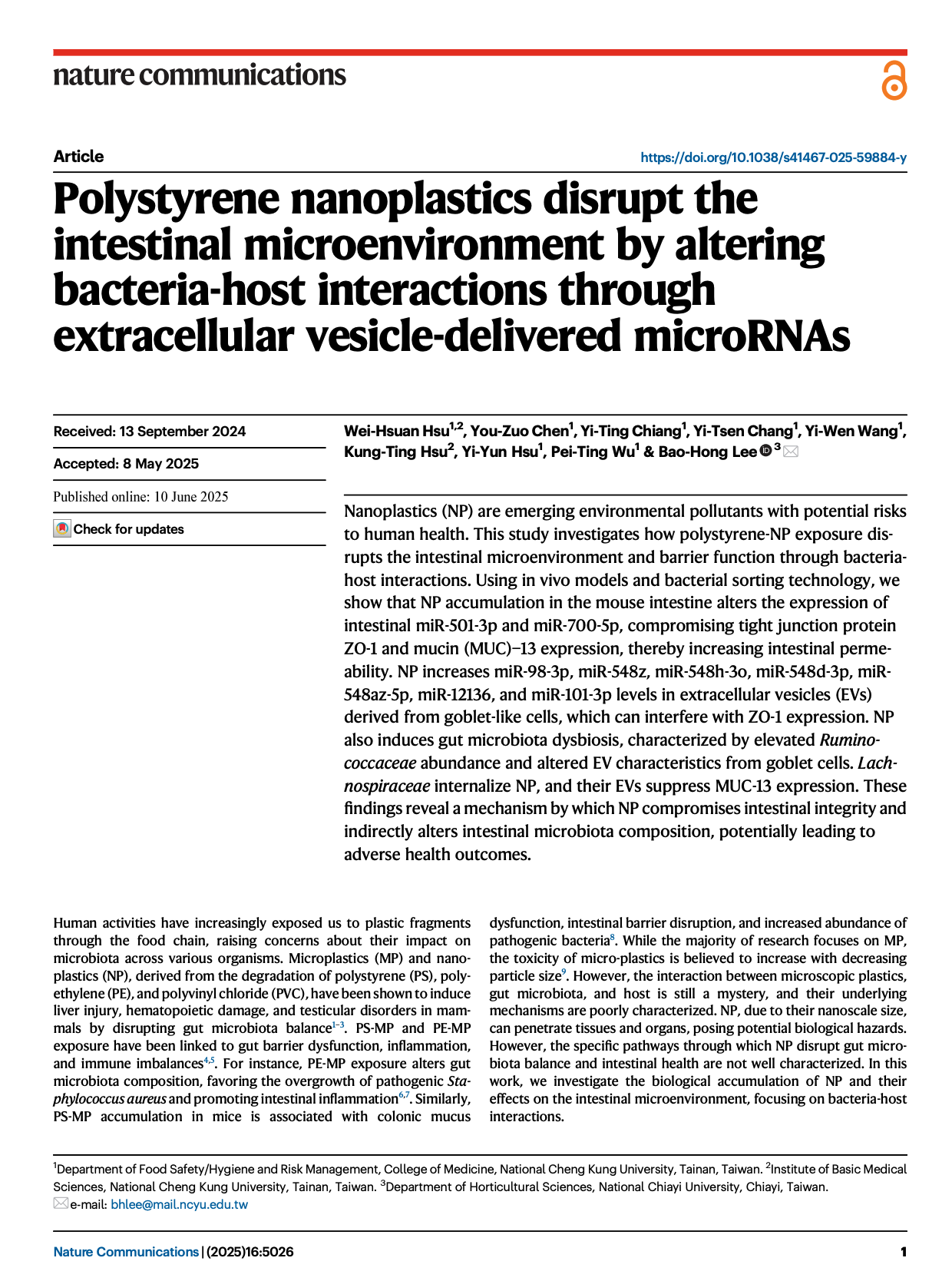Command Palette
Search for a command to run...
Polystyrene nanoplastics disrupt the intestinal microenvironment by altering bacteria-host interactions through extracellular vesicle-delivered microRNAs
Wei-Hsuan Hsu You-Zuo Chen Yi-Ting Chiang Yi-Tsen Chang Yi-Wen Wang Kung-Ting Hsu Yi-Yun Hsu Pei-Ting Wu Bao-Hong Lee

Abstract
Nanoplastics (NP) are emerging environmental pollutants with potential risks to human health. This study investigates how polystyrene-NP exposure disrupts the intestinal microenvironment and barrier function through bacteria-host interactions. Using in vivo models and bacterial sorting technology, we show that NP accumulation in the mouse intestine alters the expression of intestinal miR-501-3p and miR-700-5p, compromising tight junction protein ZO-1 and mucin (MUC)−13 expression, thereby increasing intestinal permeability. NP increases miR-98-3p, miR-548z, miR-548h-3o, miR-548d-3p, miR-548az-5p, miR-12136, and miR-101-3p levels in extracellular vesicles (EVs) derived from goblet-like cells, which can interfere with ZO-1 expression. NP also induces gut microbiota dysbiosis, characterized by elevated Ruminococcaceae abundance and altered EV characteristics from goblet cells. Lachnospiraceae internalize NP, and their EVs suppress MUC-13 expression. These findings reveal a mechanism by which NP compromises intestinal integrity and indirectly alters intestinal microbiota composition, potentially leading to adverse health outcomes.
Build AI with AI
From idea to launch — accelerate your AI development with free AI co-coding, out-of-the-box environment and best price of GPUs.